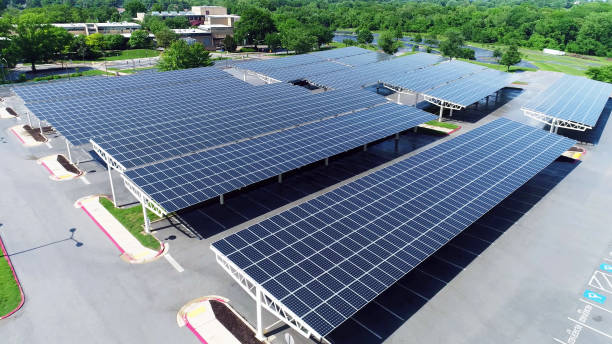Our world can be powered by solar energy. Both active and passive solar energy systems convert the sun’s enormous power into usable forms if you’re wondering how. Additionally, the use of fossil fuels like coal and oil is eliminated by solar energy. What are solar energies, though, and how do they operate? Knowing how to use our resources effectively is made possible by doing so.
What is Solar Energy?
Solar energy, in its most basic definition, is the process of capturing the sun’s energy and converting it into useful electricity for buildings and other structures. Massive energy is produced by the sun. In the form of photons, which solar panels can collect, it produces and emits energy.
Tiny solar cells are used to create solar panels. Positive and negative layers are produced by the cells using silicon semiconductor wafers, giving them a battery-like effect. Once the solar cells are connected, a panel is created, and the panels can be linked together to create your entire system. When a photon strikes a solar cell, it releases electrons that flow through the circuit and produce electricity for your home or place of business.
Why is It Important?
One of the most accessible and cleanest energy sources is solar energy. In fact, the sun produces more energy per hour than people will consume in a year. We can stop using fossil fuels and other dirty energies to pollute the Earth if we can harness that power.
Sadly, even though the technology exists, solar energy only accounts for 1.3% of the country’s energy needs. of the total energy used. Given the enormous advances in solar technology, this figure is startling.
The good news is that the solar energy market is now experiencing the fastest growth. This indicates that there are now more ways than ever before to harness the energy, making solar power more affordable and simple to use. And if forecasts are accurate, solar energy is expected to rank among the top energy sources by 2050. Now is the time to switch to renewable energy sources if you want to.
Active Solar Systems
Pumps for moving fluids in active solar systems can be fans or hot water pumps. The ability to use them to improve the efficiency of your solar system is one of their main advantages. Active solar panels are solely dependent on outside energy sources. We’ve listed some of the features of the active solar systems for you to have a look at:
Positives of Active Solar Systems
• PV flat-plate panels make up the bulk of the construction. By joining all the panels together, this type of panel uses sophisticated designs.
• In solar collectors, it’s standard procedure to use liquid or air as a conductor. Solar collectors are primarily used to conduct and store energy.
• Ordinarily referred to as hydronic collectors, conductors that use liquid are. Air collectors are those who use air.
• Compared to air-based conductors, liquid conductors are more frequently used. However, the only drawback of air-based conductors is that they don’t freeze.
Negatives of Active Solar Systems
Active solar systems have some disadvantages, just like any other product. Let’s have a look at each one of them:
• It costs a lot to buy the necessary equipment.
• Additionally, equipment upkeep can be expensive.
• Toxins may be released into the atmosphere by the fluids used to store heat in solar panels.

Passive Solar Systems
A lot of factors, including your home’s design, construction, and building, affect passive solar panels. Sunlight is used in passive energy systems to provide heating and cooling. An external device is not necessary for passive solar systems to function. To transform light into the sunlight, they employ passive collectors. The passive collectors work by transferring heat from warmer to cooler surfaces in accordance with the laws of thermodynamics. The general orientation and thermal mass of a passive solar system determine its overall performance. If you’re looking to power a small business or setup, it’s an interesting idea to invest in passive solar systems. All of the outside equipment is not necessary for passive solar systems.
The sun’s rays are collected by solar panels through heat-retaining glass windows. Passive solar systems include these features:
Positives of Passive Solar Systems
• Since no additional equipment is needed, the setup is automatically inexpensive.
• Eventually, all your energy expenditure costs are down by 14%
• It’s healthy for you because it doesn’t aggravate allergies or dry out your mucous membranes.
Negatives of Passive Solar Systems
• The weather has a direct impact on efficiency. Your buildings could overheat, especially if you reside in a warm climate.
• Weather has an immediate impact on its effectiveness. There is a possibility that your building could become too hot if you reside in an especially hot area.
• For optimum success, you would need to pick the right kind of windows.
Summary
The primary distinction between active and passive solar heating is that active solar heating uses sunlight to produce heat or electricity, which is then used to power heating systems. While passive heating uses the heat that the sun generates as it enters your house through the walls, roof, and windows to warm the objects inside.
Be sure to consider all the advantages and disadvantages before making a decision. Make sure to base your decision on how much sunlight you receive before you make it.
